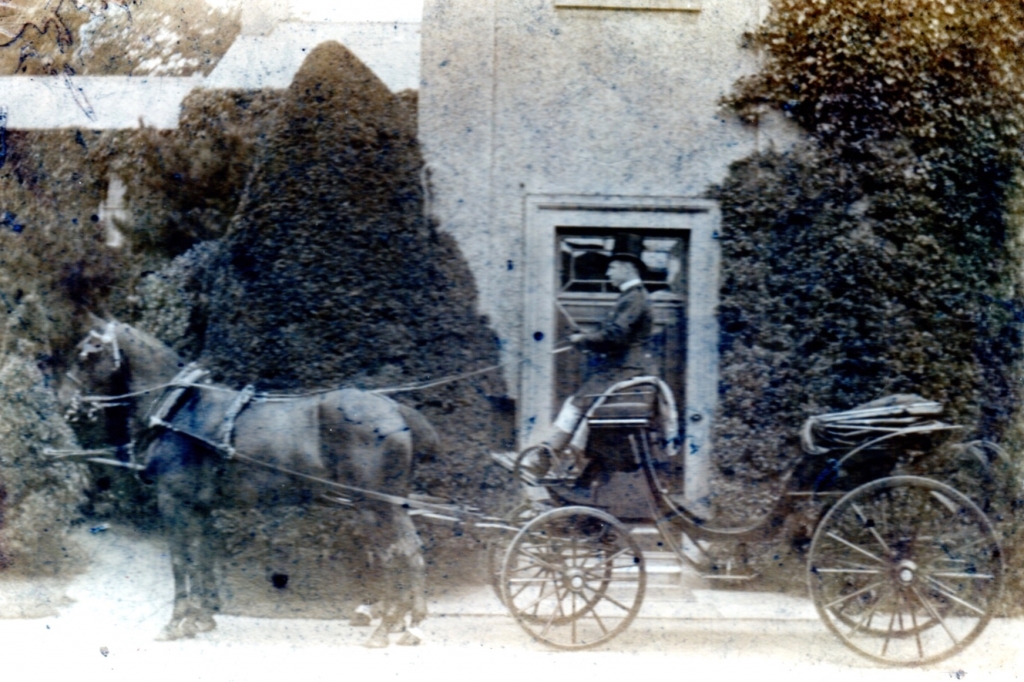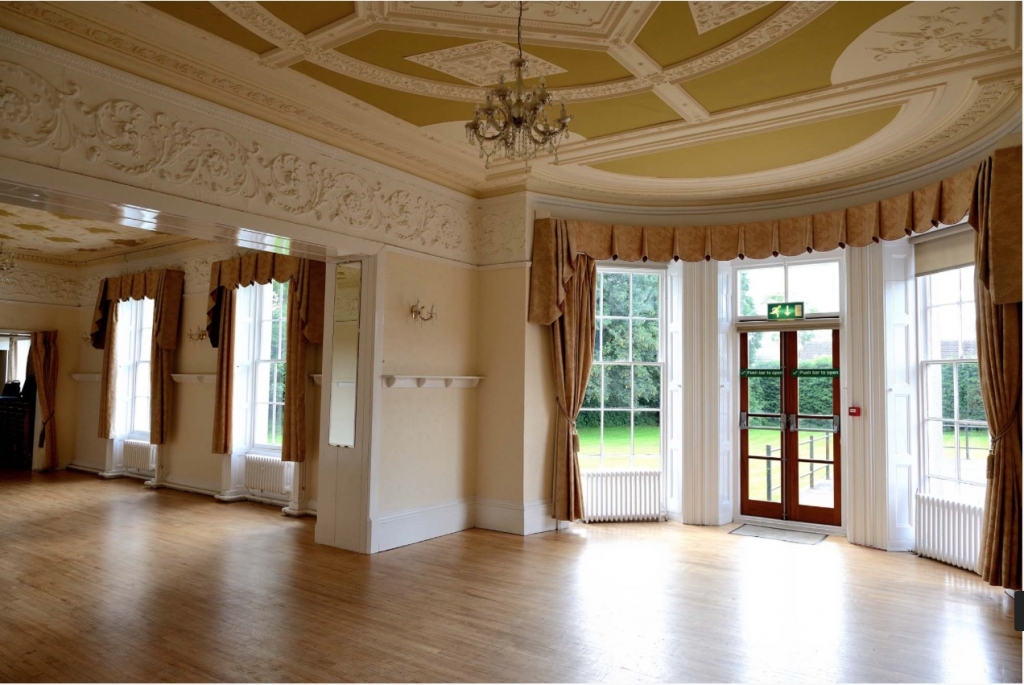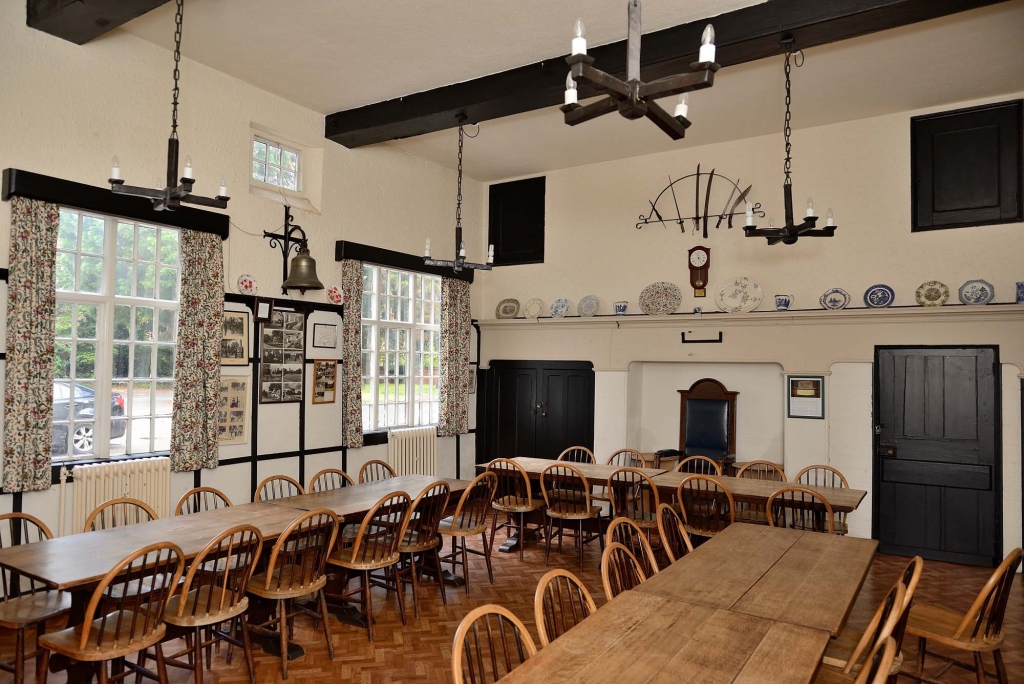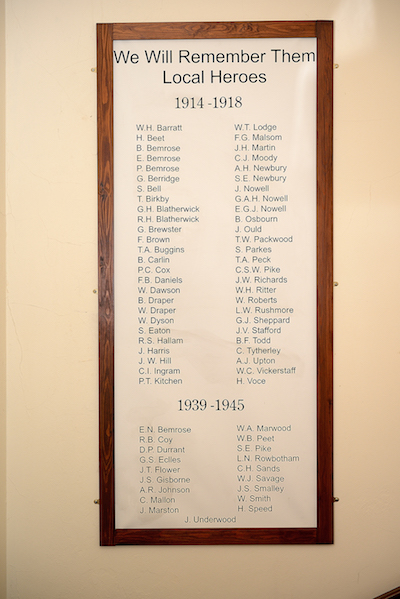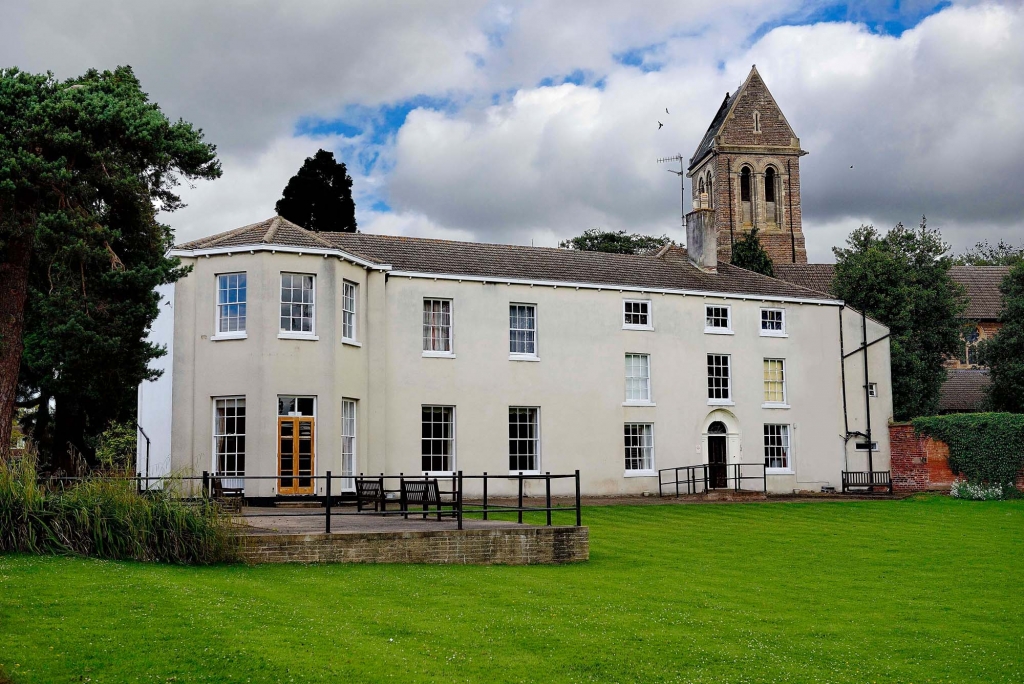Radcliffe Hall and WWI
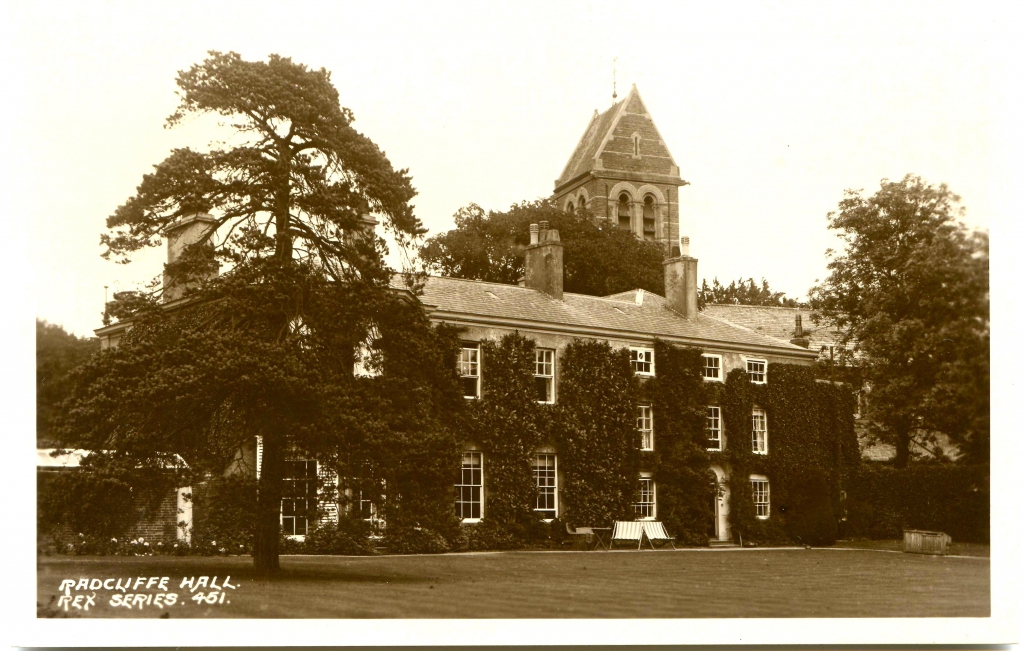
Radcliffe Hall is one of the oldest buildings in the village and is located on the Main Road next to St Marys church. It is an early eighteenth century building with mid-nineteenth century extensions. A number of people whose lives were affected by the First World War came to live at the Hall including the Claye family who rented it from 1894 to 1904. Their son, an observer with the Royal Air Force, was killed in 1918. During the war the Hall was converted into a convalescent hospital for wounded officers. The owner, Helena Smith married one of the patients, Norman Lloyd Dexter and they lived in the house until 1939. Today it is home to the local branch of the Royal British Legion.
The earliest factual evidence of its occupation is on a survey map dated 1710 which show it was owned by the Rosell family but the house was occupied by a tenant Richard Harwood. The house shown on the map is a substantial two-storeyed building with two chimneys and is described as a homestead. The adjoining land reached southwards from the Hall and covered 162 acres. Originally there were outbuildings, including stables but since the late 1960s a club house for the Royal British Legion has occupied this area.
The property and land was sold around Easter of 1716 by Gervase Rosell for £120, a surprisingly low price. The purchaser was Katherine Wood, daughter of Montague Wood of Woodborough. She died unmarried and her Radcliffe lands passed to a second cousin, Jane Wood who married James Taylor about 1720. Their son settled in Radcliffe and his descendants then owned the property and lands until 1905. The Taylor family (who originated from Lancashire) had their roots in farming and they farmed in Radcliffe on Trent for at least a hundred years.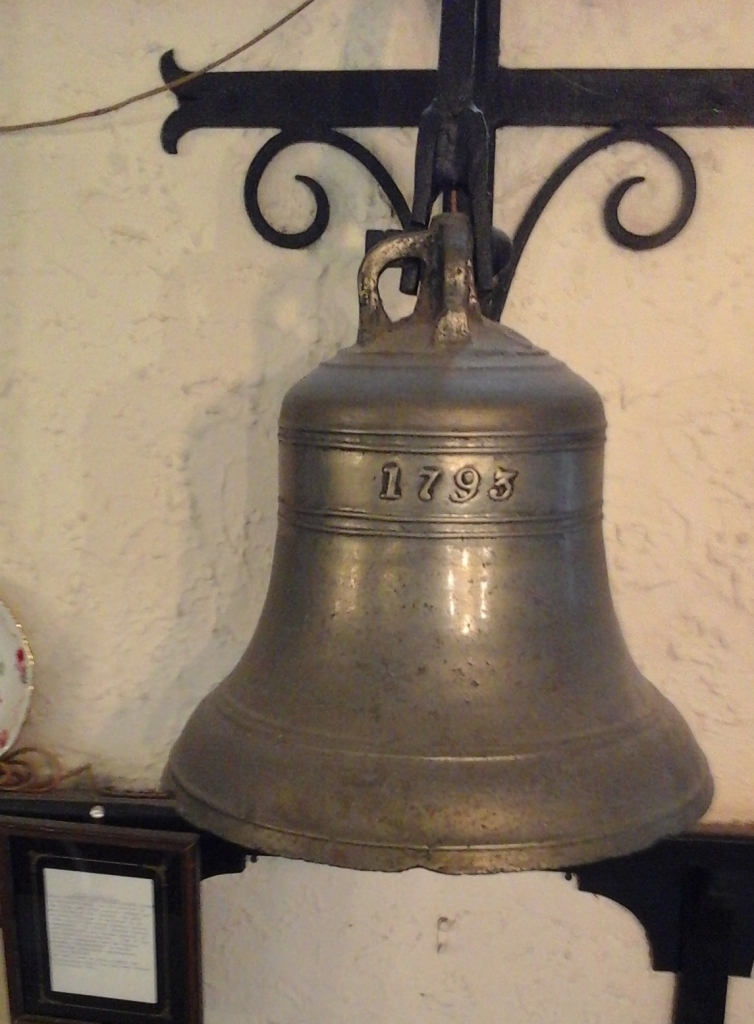
It is rumoured that around 1790–1800 Admiral Thomas Pasley lived at the Hall but only leased it. It is possible that after the Admiral lost his leg in 1794 during the French Revolutionary Wars he came to convalesce at Radcliffe Hall. Unfortunately there is no real evidence of the aforementioned involvement with the village. In the present dining room there is a ships’ bell dated 1793 that might have a connection with the Admiral and his naval service. The bell originally hung outside the dining room door but it was placed inside in 1974.
In the 1851 census William Taylor, a widower aged 55 was living at the Hall with his son John and two daughters, all unmarried and in their thirties with seven servants: a butler, coachman, housekeeper, ladies maid, housemaid, kitchen maid and footman. Both William and his son John Bagshaw Taylor were very active in village and public life. William served as a county magistrate at the Shire Hall in Nottingham and Bingham Petty Sessions. A room in the Hall was occasionally used as a magistrates court. He was also a member of the Nottinghamshire Agricultural Protection Society and a churchwarden at St Mary’s. William was caught up in the railway mania of the 1840s. He was a provisional director of the Ambergate and Notts Railway in 1845 and sat on the provisional committee of the Newark & Sheffield Railway company in 1855. William died in 1857 and his son, John became the owner of the Hall. He was very much in the mould of his father when it came to public service. In 1868 he was High Sheriff of the county. John gave up farming in 1873 but continued to live at the Hall for another ten years. He sold his horses, carriages, implements and remaining animals and let the house initially for two years. In 1885 Leonard Foster, a railway contractor, became the tenant. At an auction in July 1890 John Bagshaw Taylor sold all the furniture and contents of the house and outbuildings together with a small library of books.
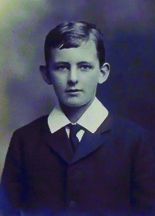 In 1894 Wentworth E Claye, a railway rolling stock manufacturer, rented Radcliffe Hall and moved in with his wife Mary, daughter Dorothy and five domestic servants. His son Charles (see photograph) was born the following year. The family left in 1904 to live at Bramcote Hills House, Bramcote. The Hall and grounds were put up for sale in 1904 and the property was described in the sales brochure as:
In 1894 Wentworth E Claye, a railway rolling stock manufacturer, rented Radcliffe Hall and moved in with his wife Mary, daughter Dorothy and five domestic servants. His son Charles (see photograph) was born the following year. The family left in 1904 to live at Bramcote Hills House, Bramcote. The Hall and grounds were put up for sale in 1904 and the property was described in the sales brochure as:
a picturesque building with southern aspect overlooking ‘old world’ pleasure grounds and lawns containing some very fine timber and ornamental trees and shrubs, conveniently situated in the village of Radcliffe, on high ground on the south side the River Trent, in one of the healthiest parts of the County. The residence contains an entrance hall, dining room 25ft 6 inches x 29ft, a drawing room 27ft x 19ft, a morning room 15ft x 15ft, breakfast room 15ft x 15ft, a butler’s pantry, large kitchen, servant’s hall, scullery, larder, dairy etc. There are 10 bedrooms (approached by principal and secondary stairs), a day nursery, work room, bathroom (with hot and cold water supply), W.C. and lobby, a billiard room 26ft x 19ft and the usual cellars, laundry and other domestic offices.
In the grounds there is a Conservatory and a well stocked kitchen garden. The outside premises are well arranged and consist of stabling for 6 horses, 2 coach houses, saddle and harness room, granary and at a convenient distance is a set of farm buildings consisting of 2 cowsheds, covered cart shed, chop house, calf house, fowl house, piggery, hovel and crew yard.
The Hall is admirably suited either as a residence for a business gentleman or for hunting purposes being in the South Notts Hunt and within easy reach of 4 other packs of hounds.
The land is of excellent quality and in a high state of cultivation.
Samuel Smith’s coachman and carriage outside the entrance to Radcliffe Hall, courtesy of Radcliffe Local History Society
The Hall was eventually sold in 1905 to Samuel Smith a Nottingham lace manufacturer who moved in with his wife Helena, son Howard and a staff of five servants (the Smiths had previously lived at Elm House on Cropwell Road, Radcliffe on Trent) . Samuel Smith also took an interest in local affairs and on 30 July 1906 Mr Smith hosted the Radcliffe Conservative and Unionist Association gala to celebrate the victory of Mr J R Starkey at the general election. Nearly a thousand people gathered to welcome him and his wife to Radcliffe. Tea was provided as well as sports, dancing and games.
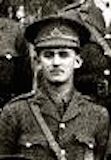 Samuel Smith died in 1912 and two years later Britain was at war. Charles Claye who was born and baptised in the village in 1895 and lived at Radcliffe Hall until 1904 lost his life towards the end of the First World War. He enlisted in September 1914 and began active service as a lieutenant with the 1/5th Sherwood Foresters in August 1916. He transferred to the Royal Flying Corp in 1917 and was wounded twice. He was killed in a bombing raid over Germany in July 1918 flying with the 99th Squadron, Royal Air Force. He was buried in France.
Samuel Smith died in 1912 and two years later Britain was at war. Charles Claye who was born and baptised in the village in 1895 and lived at Radcliffe Hall until 1904 lost his life towards the end of the First World War. He enlisted in September 1914 and began active service as a lieutenant with the 1/5th Sherwood Foresters in August 1916. He transferred to the Royal Flying Corp in 1917 and was wounded twice. He was killed in a bombing raid over Germany in July 1918 flying with the 99th Squadron, Royal Air Force. He was buried in France.
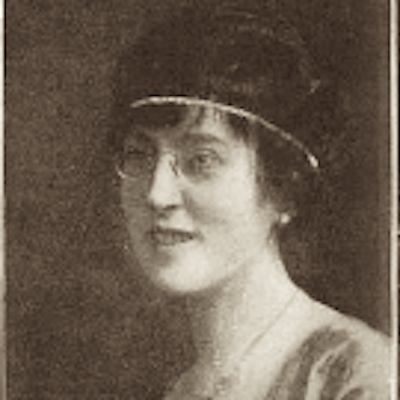 In 1916 Helena Smith, widow of Samuel, opened the hall as a convalescent home for wounded officers. The men were often seen in the village when they were well enough to go outside. Helena later married one of the patients, Lieutenant Norman Lloyd Dexter, MC from the 17th Bn Sherwood Foresters. After receiving his Military Cross for actions in September 1917 during the Battle of Menin Road Ridge he was seriously wounded in February 1918. He accidentally fell into a trench on to a rifle and fixed bayonet belonging to a fellow serviceman, resulting in the loss of his arm. He remained attached to the army and later became a Lieutenant Colonel.
In 1916 Helena Smith, widow of Samuel, opened the hall as a convalescent home for wounded officers. The men were often seen in the village when they were well enough to go outside. Helena later married one of the patients, Lieutenant Norman Lloyd Dexter, MC from the 17th Bn Sherwood Foresters. After receiving his Military Cross for actions in September 1917 during the Battle of Menin Road Ridge he was seriously wounded in February 1918. He accidentally fell into a trench on to a rifle and fixed bayonet belonging to a fellow serviceman, resulting in the loss of his arm. He remained attached to the army and later became a Lieutenant Colonel.
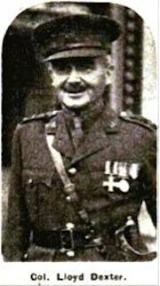 Several years after the war was over, many veterans got together to form a local branch of the British Legion in 1931 and they started meeting at the Hall. Lt Col Lloyd Dexter was a keen supporter of the British Legion and became president of the branch. A newspaper article in the Nottingham Evening Post dated August 2nd 1932 describes the first official meeting of the Radcliffe branch. Major Hole paid tribute to Norman Dexter by alluding to his interest in collecting antiques-
Several years after the war was over, many veterans got together to form a local branch of the British Legion in 1931 and they started meeting at the Hall. Lt Col Lloyd Dexter was a keen supporter of the British Legion and became president of the branch. A newspaper article in the Nottingham Evening Post dated August 2nd 1932 describes the first official meeting of the Radcliffe branch. Major Hole paid tribute to Norman Dexter by alluding to his interest in collecting antiques-
If he ransacks the capitals of Europe for things of beauty and interest, he will never take anything into Radcliffe Hall that commends more admiration than the empty sleeve he takes in every day. I think it is most fitting and proper that this first meeting of the Radcliffe Branch of the British Legion should be held in the house of a man who bears such patriotic evidence of his own great sacrifice for his county and country.
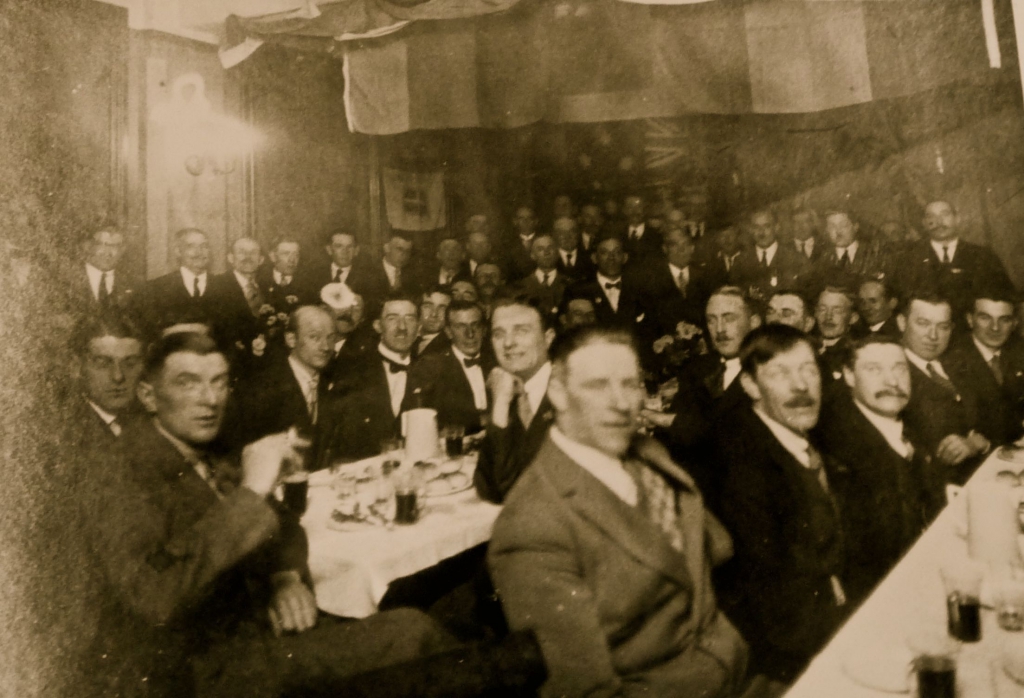
Members of the Radcliffe branch of the British Legion, date unconfirmed
The article also noted that the new branch attracted 132 members. The association was not granted the title of Royal British Legion until 1971. The photograph above shows members at a very early meeting of the British Legion.
The Dexters allowed the grounds to be used for the British Legion Garden fetes as fund raising events for a number of years. They lived at the Hall until 1938, however for a number of years they spent the winters in the South of France. They moved temporarily to East Bridgford after selling the hall, but returned to live in the village in a new bungalow at Lamcote Park on Nottingham Road where Norman Dexter farmed a herd of Guernsey and Jersey cattle. The couple retired to Scarborough where Helena died in 1965 and Norman in 1971.
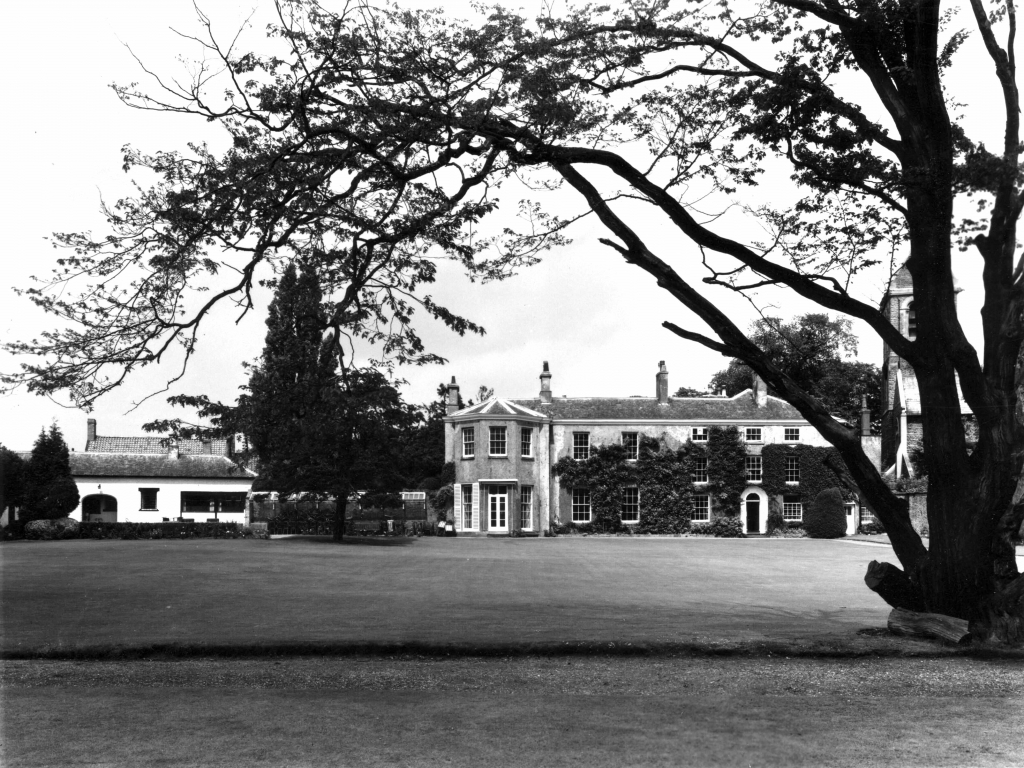
Radcliffe Hall in the 1960s, courtesy of the Radcliffe branch of the Royal British Legion
The Hall was bought by Mrs Ivy Gianelli in 1939 who ran it as the Radcliffe County Club frequented by many servicemen home on leave during the Second World War. In 1947 Mrs Gianelli had applied to Bingham Rural Council to build a sports stadium at the Hall. The complex was to consist of a stadium and stand for 3000 people, a dog track, swimming pool, ballroom and cafe. Needless to say it was refused. She then sold it to two businessmen, Mr Francis Alexander Gustavus Skardon-Douglas and Keith White Dobson, who continued to use it as a club. However in 1950 the club was heavily fined for licensing offences, resulting from a police raid on 5th August that year. The club was struck off the licensing register and the two proprietors were each fined £30 each but 52 men and women who were in the club at the time were fined a total of £53.10s.0d.
Radcliffe Hall was acquired by the British Legion in 1951 at a cost of £8,500 and so began its transformation into the local headquarters of the British Legion. The old servants quarters were made into three self-contained flats. Other upstairs rooms were used by the catholic congregation of the village. During the 1950’s the annual summer fetes were held on the extensive grounds behind The Hall (as they had been in the 1930s). A club house for the Royal British Legion was built in the converted stables, carriage house and outbuildings in the 1960s.
Radcliffe Hall main function room today, courtesy of the Radcliffe branch of the Royal British Legion
In November 1986 the Hall was Grade II listed by English Heritage who produced the following description–
Late C18 with mid C19 extensions. Render. Ashlar plinth. Concrete pantile roof. Single rendered stack. C18 front of 2 storeys, 3 bays. Central doorway with part glazed door and plain fanlight. Either side are single pilasters with fluted panels and fluted imposts with single bands of dentil over. Arch over with reeded panels and fluted keystone. Either side are single glazing bar sashes. 3 similar sashes above and 3 similar smaller sashes on the top floor. To the right and slightly set back is a narrow two and a half storey lean-to with single C20 light and single small fixed light above. To the left is the C19 wing of the same height but of 2 storeys, 3 bays. The left single bay slightly projects and has a 2 storey canted bay under conical roof. 2 glazing bar sashes, the canted bay has central doorway with glazing bar door and overlight flanked by single low glazing bar sashes. Above are 5 similar smaller sashes. To the rear are C19 extensions. Interior. C19 open well staircase with decorative wrought iron balusters. Some ground floor C19 rooms with decorative plaster ceilings.
Dining room today featuring ship’s bell and John Barry’s chair, courtesy of the Radcliffe branch of the Royal British Legion
Features inside the Hall include a carved chair in the dining room (click photograph above) in honour of British Legion chairman John Barry, a former First World War soldier. He was seriously wounded in the bombardment during the run up to the Somme in June 1916 but returned safely to Radcliffe where he played a key role in the branch for many years. Hanging on a wall up the principal staircase is a Roll of Honour dedicated to the men from the village who lost their lives in the two World Wars.
Click to enlarge photograph
Radcliffe Hall Roll of Honour, by photographer Rez Kalinder
The Hall now holds an important place in the social life of the village, with many groups hiring rooms for community functions. Today the former drawing room is used for a number of activities including dances and keep fit classes and was the location for a successful World War One exhibition in August 2014, as was the dining room (see Radcliffe on Trent WWI exhibition). Other rooms are now used as offices. Radcliffe Hall is one of Radcliffe’s few surviving old buildings, it is both well-preserved and well-used. The former land once used for farming and then later for village fetes is now built over with streets and houses from Shadwell Grove and Orford Avenue and beyond.
Radcliffe Hall today, courtesy of the Radcliffe branch of the Royal British Legion
Author: Marion Caunt

